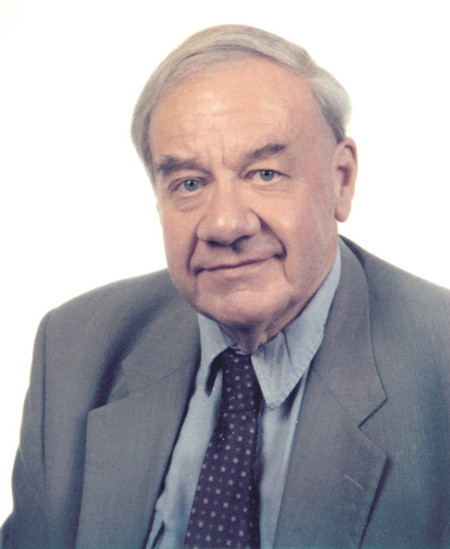Gravitational waves scientist and LIGO co-founder Ronald Drever dies at 85
Colleagues, friends and family pay tribute to Drever, who helped usher in a new era in astronomy.
Ronald Drever, the co-founder of the Laser Interferometer Gravitational-wave Observatory (LIGO), has died at the age of 85. The Caltech physicist was key to the discovery of gravitational waves, opening up a new era in astronomy.
Drever was born in Bishopton, Scotland in 1931. From a young age, he showed an interest in engineering, building a television from pieces of junk and surplus items. He attended the University of Glasgow, gaining a PhD in natural philosophy in 1958.
He started working at the university, carrying out physics experiments relating to neutrinos and Earth's magnetic field. From the 1970s, he started a research group with the aim of detecting gravitational waves – ripples in spacetime first predicted by Albert Einstein a century ago.
His would be the first experiments attempting to detect gravitational waves. After a number of failures, he started building a prototype interferometer. He joined the Caltech faculty in 1979, two years after visiting as an associate. It was here he built a prototype 40-meter inferferometer, which is still being used by LIGO scientists today.
In 1984, together with Kip S. Thorne, Richard P. Feynman and Rainer Weiss, he created LIGO. A statement from LIGO said: "Drever brought his insight as a talented experimentalist to the team of Kip Thorne and Rainer Weiss. It was the early work of this trio that made LIGO's groundbreaking discovery possible decades later. Drever's pioneering work was recognised with numerous awards."

David H Reitze, the current director of LIGO, added: "[Prof Drever] was instrumental in the 1980s and 1990s in developing some of the key concepts for precision measurement and [gravitational wave] laser interferometry."
In an obituary on the Caltech website, Thorne said Drever was "one of the most innovative scientists I've known", adding that "his approach to physics was so different from mine: intuitive rather than analytic. He could see things intuitively, quickly, that would take hours for me to understand in my more mundane way with mathematical calculations."
Drever was key to the design of LIGO, modifying the way light is trapped between mirrors. "Drever invented a method to make the laser light highly stable in frequency and perfected it in collaboration with John Hall at the University of Colorado," the obituary reads.
"This method, now called Pound-Drever-Hall laser stabilisation, has come to be used widely in other areas of science and technology. These various inventions were tested in prototype interferometers that were built at Caltech and in Glasgow under Drever's leadership, and variants of them are now incorporated into LIGO."

He retired from Caltech in 2002. The detection of gravitational waves was officially announced in February 2016. Drever was unable to celebrate the achievement with his colleagues as he was then suffering from dementia. He watched the announcement with his nephew Ian Drever.
Announcing his death in a statement, his family said he passed away peacefully following a "short, but rapid deterioration in his health".
"Ronald dedicated his lifetime to researching gravitational wave detection through LIGO and despite the fact dementia featured in his latter years, he was still aware of the global recognition that he and his colleagues at Caltech University in California and also the University of Glasgow had achieved. We are extremely proud of Ronald and his scientific achievements; he was unique and unconventional but very caring with a strong sense of humour. He will be sadly missed by us all."
© Copyright IBTimes 2025. All rights reserved.






















